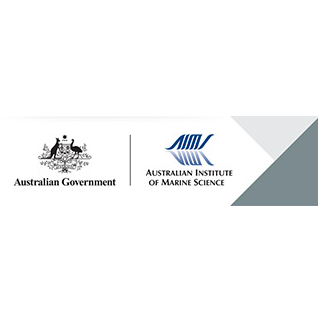Brief description
34 colonies of Acropora millepora were tagged on the reef flat of Nelly Bay, Magnetic Island in October 2000, and monitored for coral condition (visual signs of colour loss due to bleaching) and subsampled for molecular microbial analysis and zooxanthellae counts.Surface water temperatures on the Nelly Bay reef flat were obtained from October 2000 through to March 2003 using a temperature logger located approximately 50-100m from tagged colonies, which recorded half-hourly sea water temperatures. Daily mean temperatures were calculated for the duration of the monitoring period. In addition, the daily average sea water temperatures were calculated and averaged for the 10-year period 1990 to 2000 for the Nelly Bay site, using data from the Great Barrier Reef Marine Park Authority water-temperature monitoring program (supplied by R Berkelmans, Australian Institute of Marine Science).The spatial extent of bleaching (white coloration) was estimated as a percentage of colony surface area on each sampling occasion. Categories were based on visual estimates of bleaching: normally pigmented, lightly bleached (50% white) and dead (>90% dead).15 colonies were randomly selected for quantification of bleaching parameters: zooxanthellae density (cells cm-2); percentage of zooxanthellae degenerate in appearance; and µg of total protein.Clone libraries were constructed from each time period [?monthly or daily] and hybridized with digoxigenin (DIG)-labelled Vibrio-specific oligonucleotide probes. Percentages of Vibrio-affiliated clones were calculated. To better understand the effect of increased temperatures and subsequent bleaching on coral-associated microbial communities. Affiliation of DGGE bacterial sequences retrieved from coral colonies to closest relative (and accession number):Delftia acidovorans strain LMG 1226 (EU024145); Achromobacter sp PW-1 (DQ869036); Achromobacter sp PW-1 (DQ869036); Vibrio alginolyticus strain YJ06167B (EF542800); Acidovorax sp B-206 (EF596912); Marine bacterium ATAM173a_51 (AF359538); Marinobacter sp P11-B-10 (EU016152); Spongiobacter nickelotolerans (AB205011).Affiliation of cloned bacterial sequences closest relative and database accession number:OTU1 Uncultured Spongiobacter sp clone ME82 (DQ917877); OTU2 S. nickelotolerans (AB205011); OTU3 Brevundimonas mediterranea (AJ244706); OTU4 Vibrio costicola (ATCC 35508T) (X74699); OTU5 Stenotrophomonas maltophilia (AB255384); OTU6 Uncultured a-proteobacterium clone FB-1_C11 (EF220223.1); OTU7 Brevundimonas vesicularis (AJ007801); OTU8 Methylarcula sp BIO-204 (AJ534208); OTU9 Vibrio chagasii (AJ490157); OTU10 Uncultured Spongiobacter sp clone EF0305 (EF657844); OTU11 Serratia marcescens (AB117954) 654 99 3 g-Proteobacteria; OTU12 Spongiobacter nickelotolerans (AB205011); OTU13 Bacterium Ellin5130 (AY234547); OTU14 Aranicola sp EP18 (AM398227).Lineage
Maintenance and Update Frequency: notPlannedNotes
CreditBourne, David G, Dr (Principal Investigator)
Modified: 23 06 2025
text: westlimit=146.83333; southlimit=-19.16667; eastlimit=146.83333; northlimit=-19.16667
Changes in coral associated microbial communities during a bleaching event: Bourne DG, Iida Y, Uthicke S and Smith-Keune C (2008) Changes in coral associated microbial communities during a bleaching event. The ISME Journal 2: 350-363.
local : articleId=7739
- global : 5d824172-3f7d-4465-8e37-1664cbbda3a8


